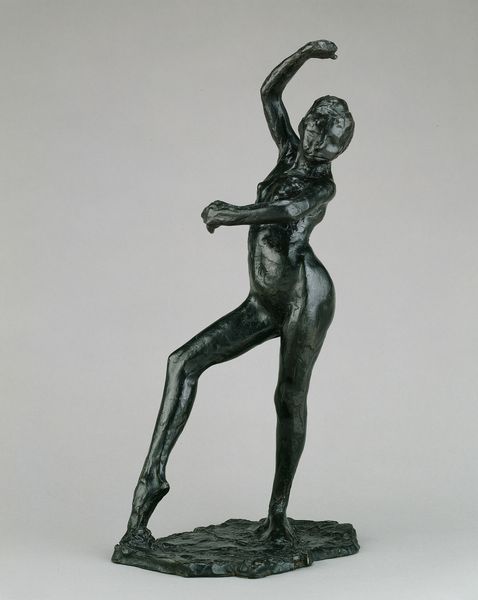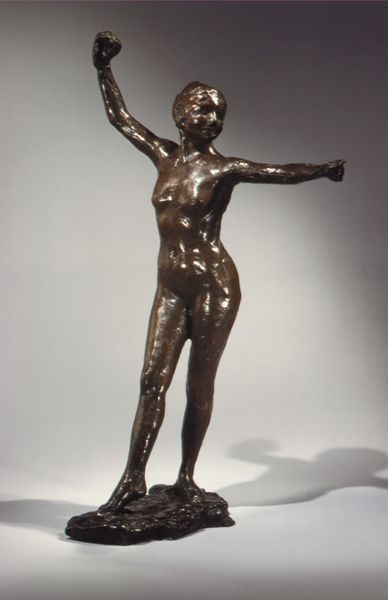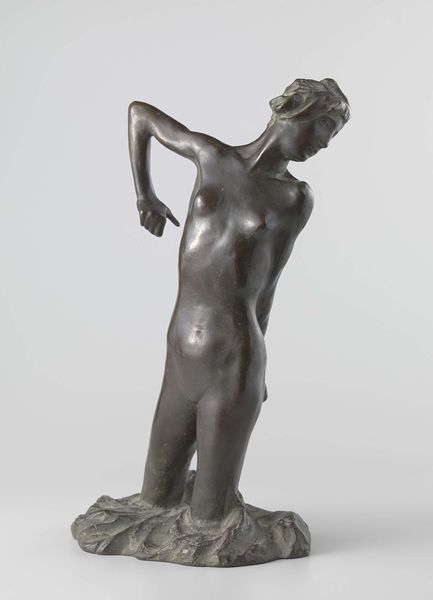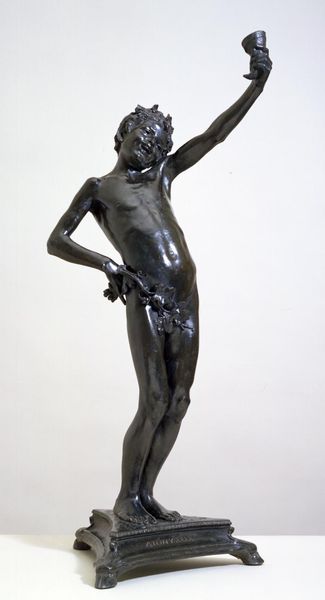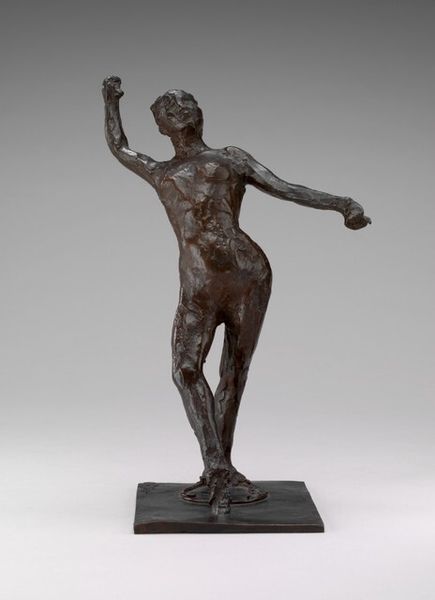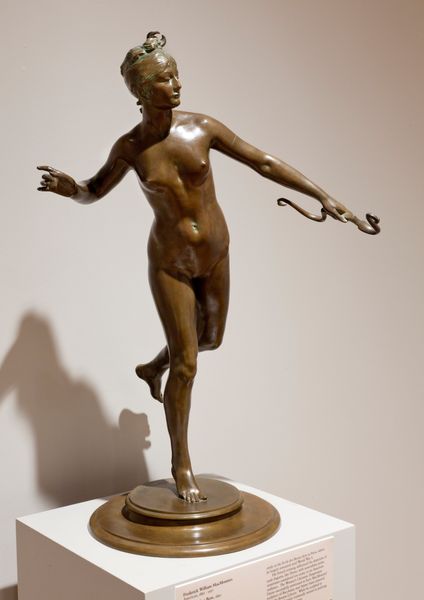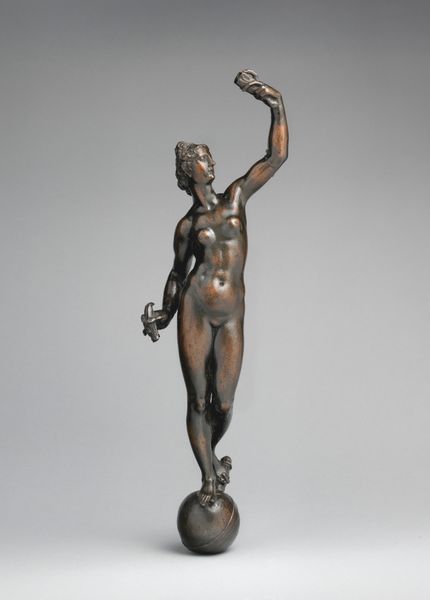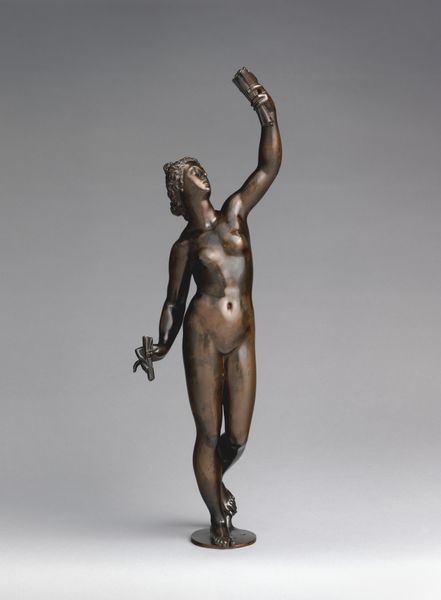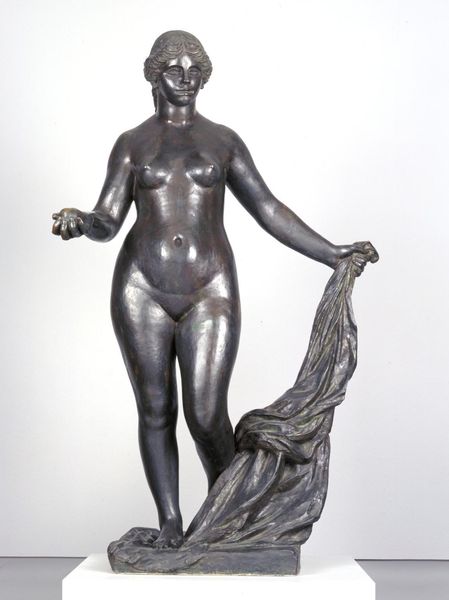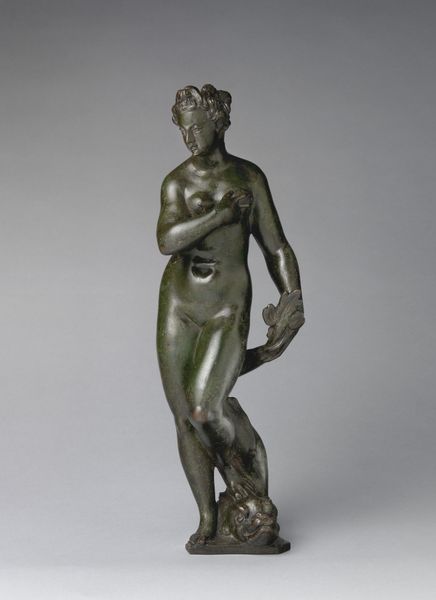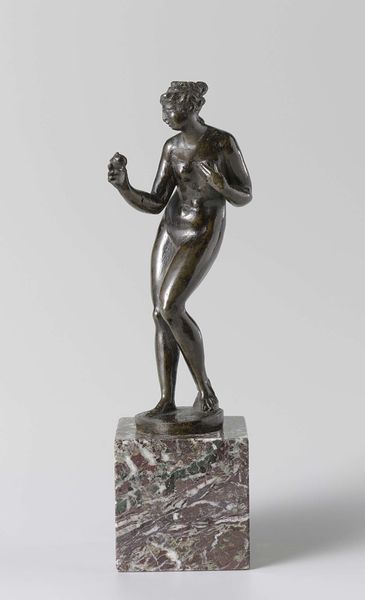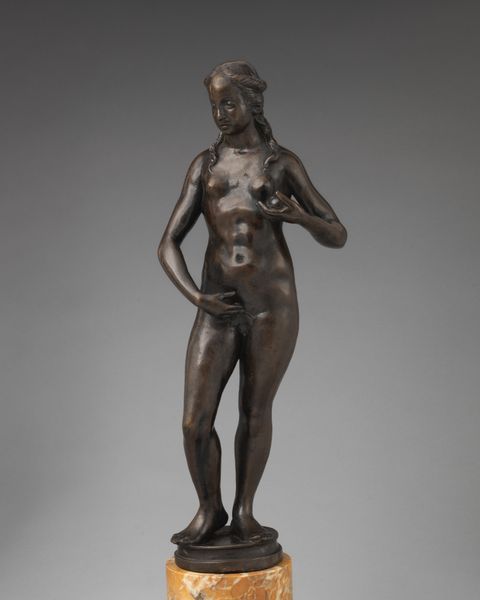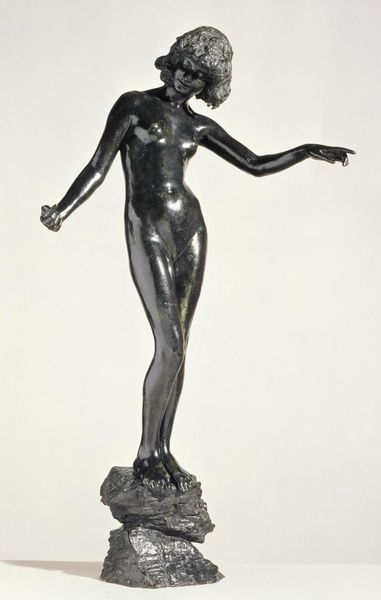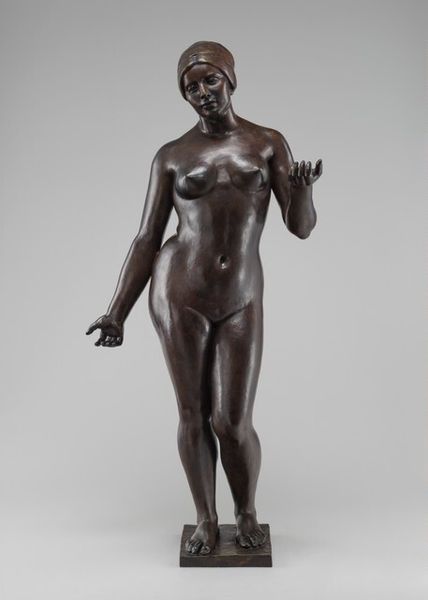
Dimensions: object: 1626 x 1308 x 648 mm
Copyright: © Estate of Sir Charles Wheeler | CC-BY-NC-ND 4.0 DEED, Photo: Tate
Editor: So, this is Sir Charles Wheeler's bronze sculpture, "Spring." There's no date, but it's in the Tate collection. I find her pose so dynamic, almost like she's dancing or greeting the sun. What do you see in this piece? Curator: I see a work deeply embedded in its time, reflecting the societal ideals of beauty and femininity of the early to mid-20th century. The figure's idealized form, though classical in inspiration, needs to be viewed critically. How does the sculpture reinforce or challenge the male gaze? Editor: I hadn't thought about it that way. It does feel like she's posed for the viewer, almost passively. Curator: Exactly. Considering the historical context, we can explore how Wheeler's "Spring" participates in the construction of gender roles, and perhaps question what "spring" represents in terms of female identity. It’s not just about aesthetic appreciation but a critical engagement. Editor: That really changes how I see it. Thanks! Curator: My pleasure, it has been a pleasure speaking with you too.
Comments
Join the conversation
Join millions of artists and users on Artera today and experience the ultimate creative platform.
tate 6 months ago
⋮
The model was Marguerite Kelsey who sat to Meredith Frampton in 1928. Wheeler was a painter and sculptor who exhibited regularly at the Royal Academy summer exhibition from 1914 to 1970. 'Spring' was shown at the 1930 summer exhibition. She holds a seed in her right hand symbolising her personification. Flowers bloom in relief on her feet and are indented on the rest of her body. Wheeler discovered the model at an evening sketch class and said that she brought spring into his studio when it was midwinter. Other sculptures by Wheeler include the Jellicoe Memorial Fountain in Trafalgar Square and figures on the Bank of England building. He was President of the Royal Academy 1956-66. Gallery label, August 2004
